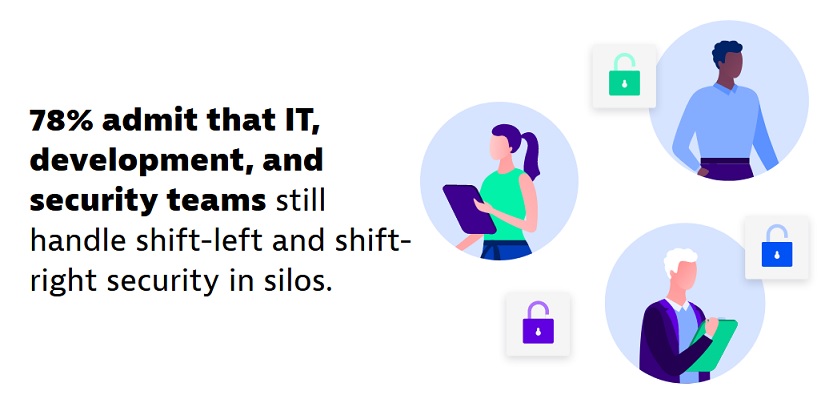Parasoft announces the opening of its new office in Northeast Ohio.
The prevalence of team silos and point solutions throughout the DevSecOps lifecycle make it increasingly difficult for development, security, and operational teams to have comprehensive visibility into the threats affecting their cloud environments. In fact, according to a recent Dynatrace study, 77% of chief information security officers (CISOs) say it's a significant challenge to prioritize vulnerabilities because of a lack of information about the risks they pose. This issue underscores the critical role that risk assessment plays in effective vulnerability management.
As organizations modernize their application stacks around cloud-native technologies such as microservices and containers, a best practice is to adopt both shift-left and shift-right strategies. Shifting security left means identifying security vulnerabilities in development through testing, while shifting right means identifying vulnerabilities in production through runtime vulnerability analysis and other methods.
Combining these strategies helps to reduce the time it takes to find vulnerabilities from days or weeks to minutes and enables teams to be more effective in their resolution strategies. By using shift-left and -right strategies, organizations can enhance their overall cybersecurity posture and effectively address vulnerabilities throughout the software development lifecycle.
While the advantages of these practices and DevSecOps are widely recognized, many organizations are still in the initial phases of implementation.

Overcoming the Challenges of Siloed Tools
Siloed vulnerability management tools make it difficult for companies to identify and mitigate risks. Switching between and reconciling the insights from siloed tools also proves to be extremely time-consuming, as it hinders IT teams from gaining a holistic view. According to the Dynatrace study, more than 40% of CISOs say analysis is time-consuming, and managing alerts from different tools is labor-intensive.
Time spent on manual analysis detracts from time spent on innovation and problem resolution. According to the study, each member of development and application security teams spends nearly a third (28%) of their time — or 11 hours each week — on vulnerability management tasks that could be automated. Further, only 33% of CISOs have automated handoffs across functions.
The integration and automation of workflows streamline cross-functional collaboration, enabling faster response times and smoother coordination across teams. Organizations must look to adopt a platform approach to eliminate manual processes and error. In fact, 88% of CISOs say DevSecOps would be more effective if all teams worked from one platform integrated into their process.
Implementing an Approach That Converges Observability and Security
By leveraging observability and security across DevSecOps and integrating application security principles and practices into software development and operations, organizations can deliver software and services at speed without compromising application security. IT leaders need to adopt platform solutions that converge observability and security data and are powered by trusted AI and intelligent automation. Solutions that converge observability and security improve an organization's overall security posture and reduce the risk of cyberattacks, helping companies protect their reputation, minimize manual intervention, and deliver precise answers through explainable, intelligent automation.
Looking Ahead with DevSecOps: The Importance of AI and Automation
According to the study, 86% of CISOs say AI and automation are critical to the success of DevSecOps and overcoming resource challenges. By adopting AI and automation and using tools that converge observability and security, customers have reduced the time they spend identifying and prioritizing vulnerabilities by up to 95%, helping them deliver faster, more secure innovation that keeps them at the forefront of their industries.
Industry News
Postman released v11, a significant update that speeds up development by reducing collaboration friction on APIs.
Sysdig announced the launch of the company’s Runtime Insights Partner Ecosystem, recognizing the leading security solutions that combine with Sysdig to help customers prioritize and respond to critical security risks.
Nokod Security announced the general availability of the Nokod Security Platform.
Drata has acquired oak9, a cloud native security platform, and released a new capability in beta to seamlessly bring continuous compliance into the software development lifecycle.
Amazon Web Services (AWS) announced the general availability of Amazon Q, a generative artificial intelligence (AI)-powered assistant for accelerating software development and leveraging companies’ internal data.
Red Hat announced the general availability of Red Hat Enterprise Linux 9.4, the latest version of the enterprise Linux platform.
ActiveState unveiled Get Current, Stay Current (GCSC) – a continuous code refactoring service that deals with breaking changes so enterprises can stay current with the pace of open source.
Lineaje released Open-Source Manager (OSM), a solution to bring transparency to open-source software components in applications and proactively manage and mitigate associated risks.
Synopsys announced the availability of Polaris Assist, an AI-powered application security assistant on the Synopsys Polaris Software Integrity Platform®.
Backslash Security announced the findings of its GPT-4 developer simulation exercise, designed and conducted by the Backslash Research Team, to identify security issues associated with LLM-generated code. The Backslash platform offers several core capabilities that address growing security concerns around AI-generated code, including open source code reachability analysis and phantom package visibility capabilities.
Azul announced that Azul Intelligence Cloud, Azul’s cloud analytics solution -- which provides actionable intelligence from production Java runtime data to dramatically boost developer productivity -- now supports Oracle JDK and any OpenJDK-based JVM (Java Virtual Machine) from any vendor or distribution.
F5 announced new security offerings: F5 Distributed Cloud Services Web Application Scanning, BIG-IP Next Web Application Firewall (WAF), and NGINX App Protect for open source deployments.
Code Intelligence announced a new feature to CI Sense, a scalable fuzzing platform for continuous testing.
WSO2 is adding new capabilities for WSO2 API Manager, WSO2 API Platform for Kubernetes (WSO2 APK), and WSO2 Micro Integrator.




